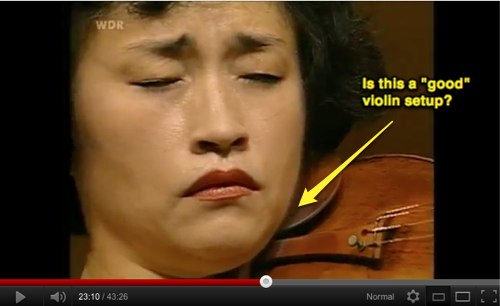New music students (and their families) often think learning violin is about soaking up the lessons. That the private teacher will give them those mad skills. So get some lessons, then go out into the world and use what you learned. Practice to refine it and to improve retention. All’s well and good, except…
What you can get out of a 30 minute lesson is just a skimpy slice of the pie. Surprisingly, the process of becoming a proficient musician is more like being a combination of an inventor, explorer and planner. Your teacher can only give you the raw ingredients of the of the recipe; it’s up to you to actually make something of it.
So forget about coming to lessons and mindlessly spitting out what you’ve learned. Or watching videos on the internet and trying to copy other violinists playing your favorite songs. Learning violin requires that you engage your brain and your best powers of observation. It demands a patient attitude and a lot of curiosity.
If you’re proficient at music, it’s because you’ve learned how to solve these progressively more complex problems. But if you’re bored, stuck, frustrated and/or no longer making progress, it’s likely because you don’t have a solid strategy to improve your playing.
Repeating a song or musical passage over and over until you’re bored to tears is an almost certain recipe for failure. Instead let your sense of discomfort or frustration be your guidepost. Your mind is telling you that what you are doing isn’t going to produce the result you want. You need something more.
In my studio, once we get past the basics we kick into our “creative problem solving” mode. I demonstrate some simple strategies to fix a problem passage, and ask the student to do the same.
“Bobby, next week, show me three different ways to improve this weak spot” goes right into the homework assignment. “And playing it over and over until it sounds good doesn’t count.”
Surely a violin newbie will be hard pressed to come up with much of a list. So I supply a menu from which the student can select the most effective and appropriate choice. For example, here are some items from my “take away” menu for young violinists.
TAKE AWAY SOMETHING from a problem to make it simpler
- Remove the rhythm and play it in quarter notes
- Remove the bowings
- Play it in an easier position/fingering
- Work on a smaller section and expand to surroundings
- Use a slower tempo, when improved, make a meaningful tempo increase and try again.
- Use less tone or vibrato
- Don’t play across syncopated ties (similar to remove bowings)
- Use pizzicato instead of bow
- Use the bow without the violin hand
- Left hand only and bow 2″ above string
- Left hand only and sing or count
- Bow only and sing or count
- Freeze time after every note and take stock of bow position
The concept behind the take away strategy is simple: problems become easy to solve once you’ve isolated them to their most basic components. This enables you to make visible progress in just minutes. That alone is super motivating for a student of any level.
—
What are your favorite practice strategies? Please help me grow the list by commenting, sharing or tweeting. Thanks!


